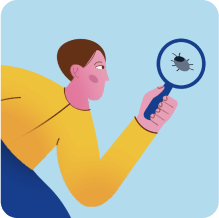User Stories: Their Format and Importance in Agile Development
Requirements are essential in the product lifecycle, particularly in testing. Clear, well-defined requirements significantly improve the efficiency and effectiveness of test planning and execution. One widely used and highly beneficial format for writing these requirements is user stories. User stories offer a structured and user-centric approach, making them especially convenient and effective for creating comprehensive test scenarios.
A user story is a concise, simple description of a software feature or functionality from the perspective of the end-user or customer. It captures the who, what, and why of a feature in a straightforward format:
“As a [type of user], I want [an action] so that [a benefit/a value].”
This format helps ensure that development efforts are focused on delivering real value to users. User stories are a part of agile methodologies as the basis for planning, discussion, and prioritisation within development teams. They are designed to foster collaboration, clarify requirements, and maintain a user-centred focus throughout development.
According to a 2021 survey by Digital.ai, 58% of agile teams report improved project visibility and alignment with customer needs by using user stories.
You’re likely seeing what most Agile teams discovered last year – when you nail your user stories, everything else clicks into place. Nearly two-thirds of teams reported better project focus and happier customers.
Here’s the thing, though: the magic isn’t just in writing user stories, it’s in what you do next. Start by picking one user story from your current sprint and break it down into three specific test scenarios today. Don’t overthink it – just map out what success looks like from your user’s perspective.
The teams seeing real results are the ones who test their assumptions early instead of hoping their interpretation was right. That says something about the importance of these stories, right?
Let’s dive into the benefits to give you even more context.
Benefits of user stories: Why are they crucial for generating comprehensive scenarios?
User stories provide detailed granularity and a clear understanding of the expected actions or capabilities of the user, along with well-defined acceptance criteria. This structured approach facilitates more effective test coverage of these requirements. The better a user story is written and organized, the more comprehensive and targeted the resulting test cases and scenarios will be. Let’s explore the benefits of user stories specifically from a testing perspective:
- Focused Development: By framing features from the user’s perspective, user stories help you prioritise work that delivers the most value, ensuring efforts are aligned with user needs and business goals.
- Flexibility and Adaptability: User stories are typically small and manageable, making it easier to adapt to changes and incorporate feedback throughout the development process.
- Improved User Experience: Since user stories are centred around the end user’s needs and goals, they help you create more user-friendly and intuitive products.
- Better Requirement Clarity: The concise format of user stories helps avoid ambiguity, making requirements clear and understandable for technical and non-technical team members.
- Efficient Planning and Estimation: User stories provide a straightforward way to break down complex features into smaller tasks, helping you in more accurate planning, estimation, and tracking of progress.

Understanding these benefits is crucial, but it’s equally important to recognise the key characteristics that make user stories effective. Let’s dive into the characteristics where we give you the ultimate solution for creating test scenarios from user stories.
You'll find that some user stories practically write themselves into test cases, while others need serious detective work to uncover hidden scenarios. The sweet spot is starting with the obvious happy path, then poking around the edges using boundary value analysis. You need to throw in values just above and below limits to catch those sneaky edge cases.
Tackle non-functional stuff like performance alongside your standard functional tests from day one. Teams doing this see nearly doubled defect catch rates compared to those stuck in the old functional-only mindset.
Your first move should be mapping out both the "everything works perfectly" and "user does something weird" paths, because they absolutely will do something weird.
Best Practices for Transforming User Stories into Test Scenarios
Converting user stories into solid test scenarios isn’t rocket science, but there are some tricks that’ll save you headaches down the road.
Start with what we call ‘three-way conversations’ – get your product owner, developer, and tester in the same room (or Zoom call) to poke around the acceptance criteria together. You’d be surprised how many assumptions get cleared up in these 15-minute chats.
Here’s your concrete necessary approach: grab one user story and rewrite its acceptance criteria using the Given-When-Then format. It creates a direct bridge to your test cases that even your future self will thank you for. Don’t just test the happy path, though.
Teams that focus only on positive scenarios miss nearly 40% of real-world issues. Throw in some boundary testing, weird data inputs, and those ‘what if the user does something completely unexpected’ scenarios.
Also, note it: non-functional stuff like load times or security checks often hide in user stories, and they need their own test scenarios too. The payoff is worth it: teams using structured story-to-test practices report fewer post-release surprises and way less time spent figuring out ‘what were we supposed to test here again?’
How to Write Test Scenarios from User Stories with aqua cloud
Finally, we are on to the magnum opus of our guide for creating test scenario based on user story. Here you get equipped with a solution that will turn this process into a breeze. At the end of the textual section, you also have a comprehensive video, so make sure you watch the video till the end.
Creating test scenarios from user stories can be a complex and time-consuming task. However, with the right tool and approach, you can streamline it significantly.
This is where aqua cloud comes into play. aqua is a Test Management Solution (TMS) that uses the power of AI to turn all your test management processes into an effortless task.
Here’s a step-by-step guide on how to write test scenarios from user stories using aqua cloud:
Step 1: Define Your Primary (Parent) Requirement and Related (Dependent or Child) Requirements
Purpose: The initial step is to define the scope of what needs to be tested within your test scenario. This involves specifying the main requirement and all related requirements. This can be achieved using your personal knowledge and understanding of the project, the category of the current requirements and functionality, or by leveraging existing custom fields or branches of your requirements.
How aqua helps you: aqua cloud allows you to build, maintain, and visualise all dependencies and hierarchies between requirements, making them 100% traceable with a single click. This ensures you have a clear and comprehensive understanding of the relationships between various requirements, which is crucial for effective test scenario creation.
Step 2: Identify (Collect) Test Cases That Should Cover Your Requirements
Purpose: The next step is to define the scope of testing by ensuring all specified requirements are covered by test cases. You can achieve this using personal knowledge of the project or through custom fields or branches of your requirements.
How aqua helps you: aqua enables you to build, maintain, and visualise all dependencies and hierarchies between requirements and test cases, ensuring full traceability and 100% test coverage. This eliminates the extra effort required to track this critical metric manually.
Step 3: Identify Covered Requirements with Test Cases and Address Possible Gaps
Purpose: After defining the requirements and related test cases, the task is to identify any requirements that are not covered by test cases or where test cases are outdated. If such cases are found, it is necessary to write the missing test cases and update the existing ones.
How aqua helps you: aqua provides convenient and accessible requirement coverage visualisation, allowing you to identify missing test cases with just a few clicks. For creating or updating test cases, aqua’s AI copilot can transform your requirements into full-fledged test cases, saving up to 97% of your time at this stage.
Step 4: Compile the Test Cases into a Test Scenario
Purpose: The goal here is to compile the test cases into a test scenario (or test plan) and reorganise them according to execution sequence logic and priorities.
How aqua helps: aqua provides a simple and user-friendly interface with many features where you can reorganise test cases using drag-and-drop, make changes to the test case configuration within the test scenario, reuse test cases, use test data parameterisation, or connect different sets of test data to cover more possible cases. aqua also offers a customisable ‘run dependency’ configuration, allowing you to set a specific sequence of test case execution and detailed dependencies, ensuring a smooth and logical test execution process.
Step 5: Link the Created Test Scenario to Your Requirement
Purpose: To maintain data currency and avoid additional searches or data updates during future iterations of this process, link the newly created test scenario to the main requirement defined in step 1.
How aqua helps: aqua allows you to store and visualise the dependencies not only between requirements and test cases but also between requirements and full-fledged test scenarios. This enhances data transparency and simplifies working with your test management suite.

And here is the full video explanation of the entire process:
Ready to transform how you create test scenarios from user stories? aqua cloud streamlines the entire process, from defining requirements and ensuring comprehensive test coverage to organising and executing test cases with ease. But that is not all. As an all-around test management solution, aqua can generate test cases from requirements, test data and much more just using your brief text context or voice prompt. aqua is the first tool in the QA industry to offer this level of efficiency and innovation. Plus, with our brilliant Jira sync and integration, you can create defects in Jira as you execute aqua test cases and keep development and QA efforts in perfect sync. So why delay your testing transformation? Experience seamless integration, full traceability, and unparalleled efficiency in your test management processes with an AI test management tool.
Save 97% of your time, achieve 100% traceability with a single solution
AI-Powered Test Scenario Generation: How Modern Solutions Enhance Coverage
Modern test management platforms like aqua cloud use AI to transform user stories into solid test scenarios and they’re getting scary good at it. The AI reads through your user stories and acceptance criteria, then spits out comprehensive test scenarios covering positive cases, negative flows, and those tricky edge cases that usually slip through the cracks. What’s even better? Everything stays connected automatically. Your stories link to test cases, test cases link to defects with no manual tracking headaches.
You need to start by feeding the AI your most complex user story. You’ll likely see it generate scenarios you hadn’t even considered, often catching boundary conditions that teams miss about 60% of the time. The real-time dashboards show exactly where your coverage gaps are, so you’re not flying blind when requirements shift (and they always do).
Conclusion
In this guide, you learned that creating test scenarios from user stories is a crucial process that ensures your software meets user expectations and delivers real value. By following a structured approach and using the capabilities of aqua cloud, you can efficiently learn how to test scenarios based on user story. aqua cloud not only enhances collaboration, traceability, and test coverage but also saves you significant time with the power of AI. Embrace the power of aqua cloud to streamline your test management process, improve product quality, and boost your team’s productivity.
Speed your test management process up 100%


















